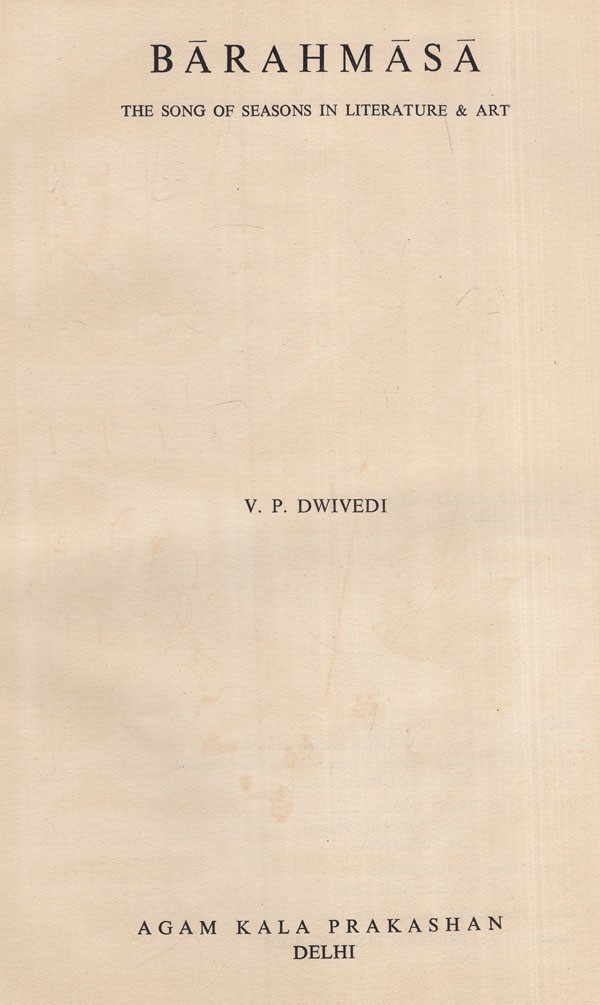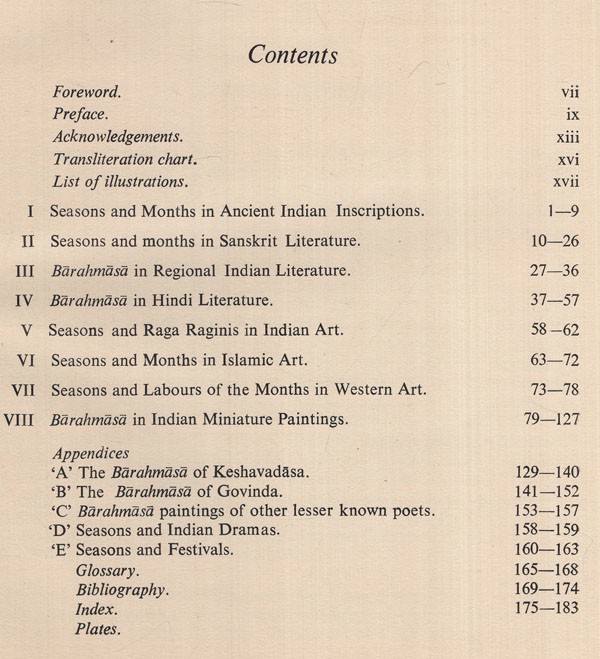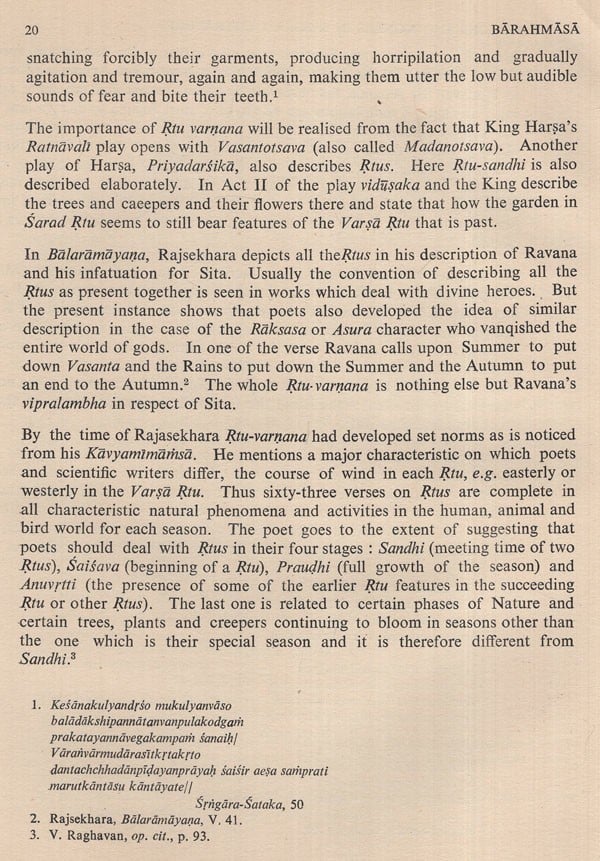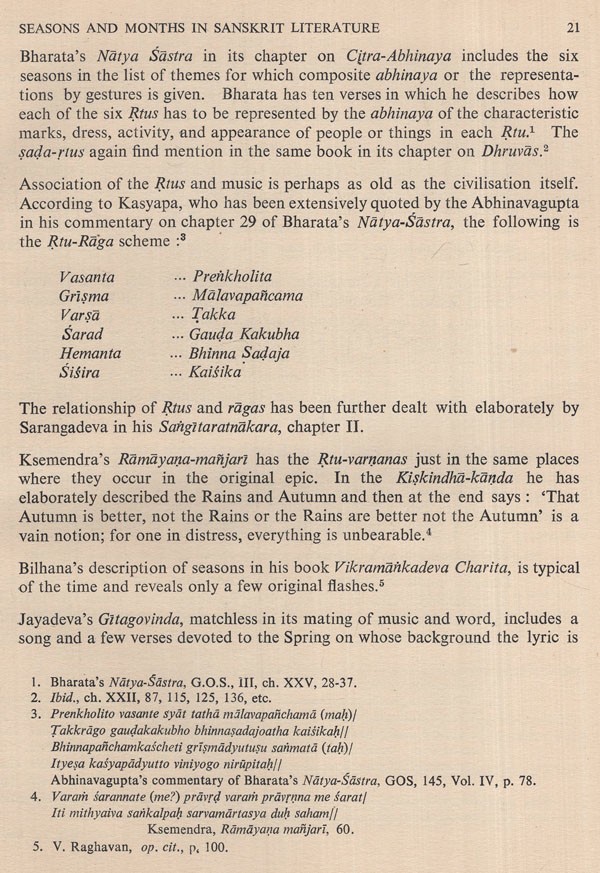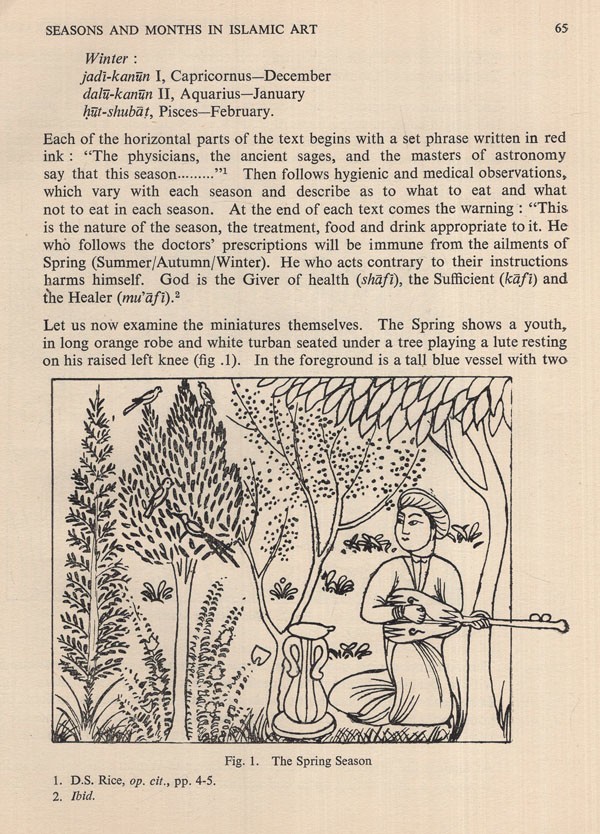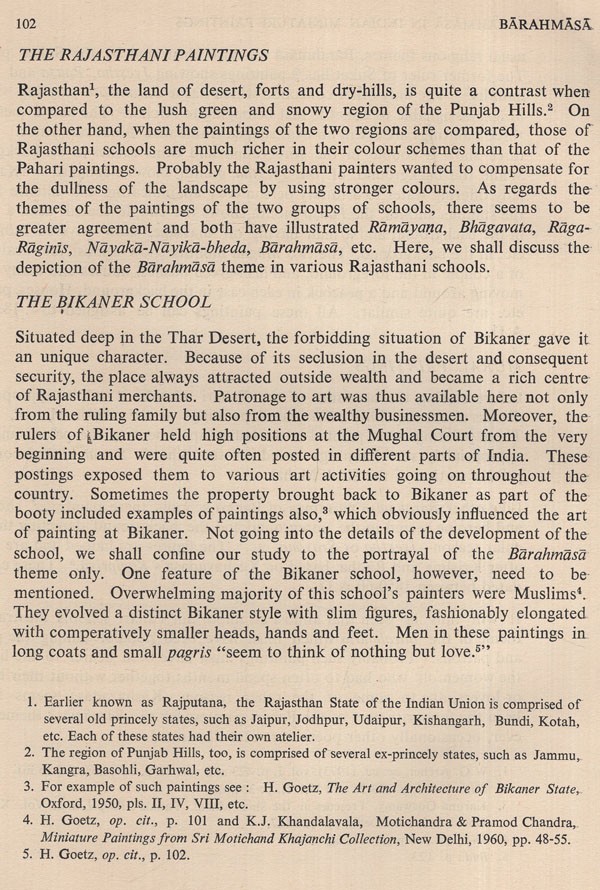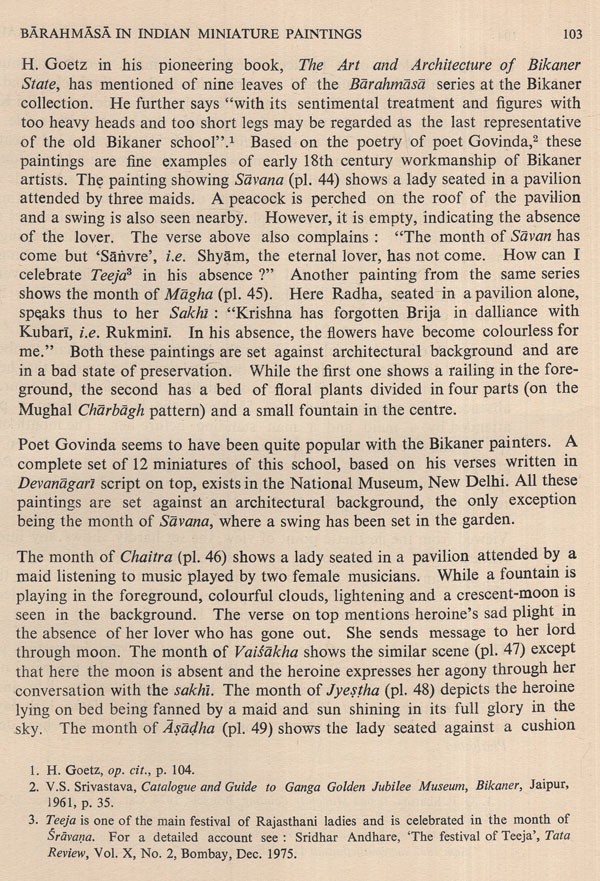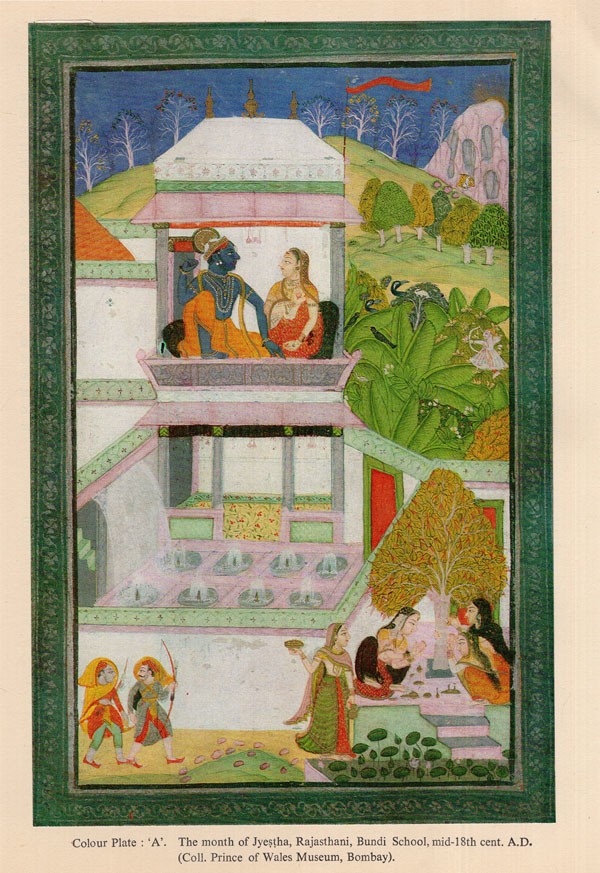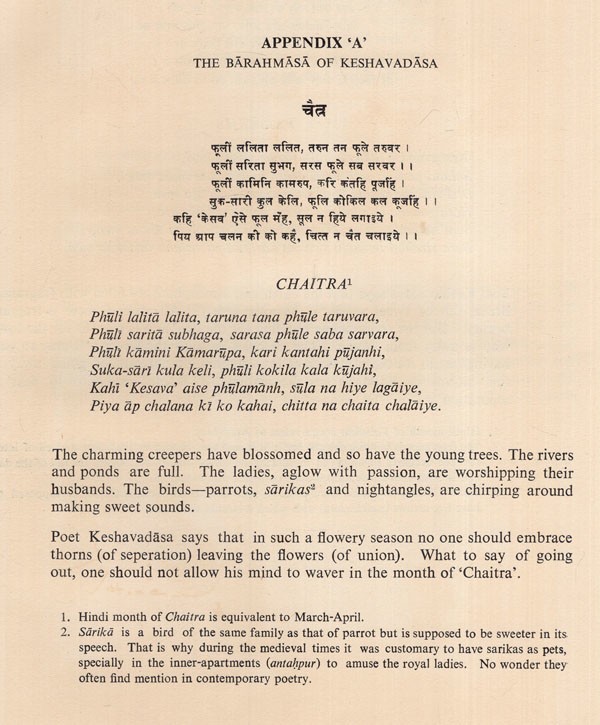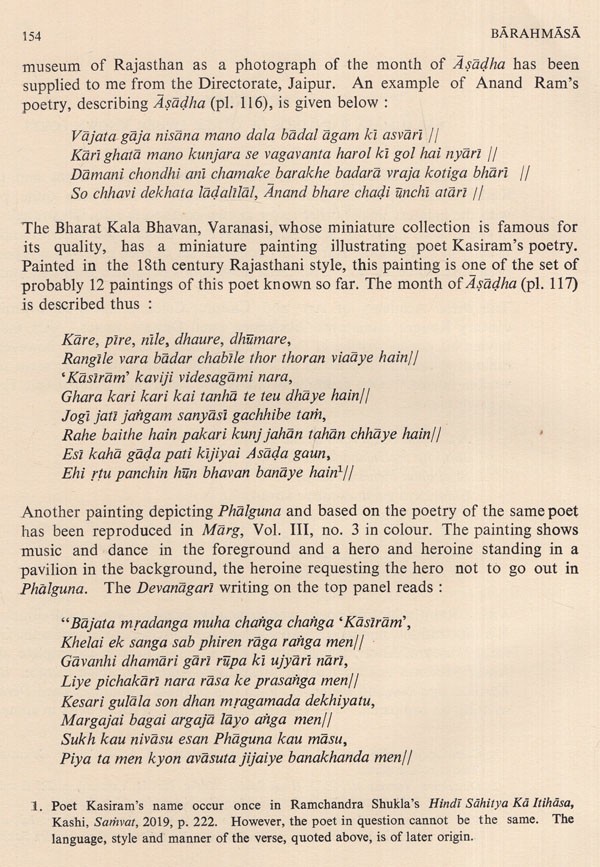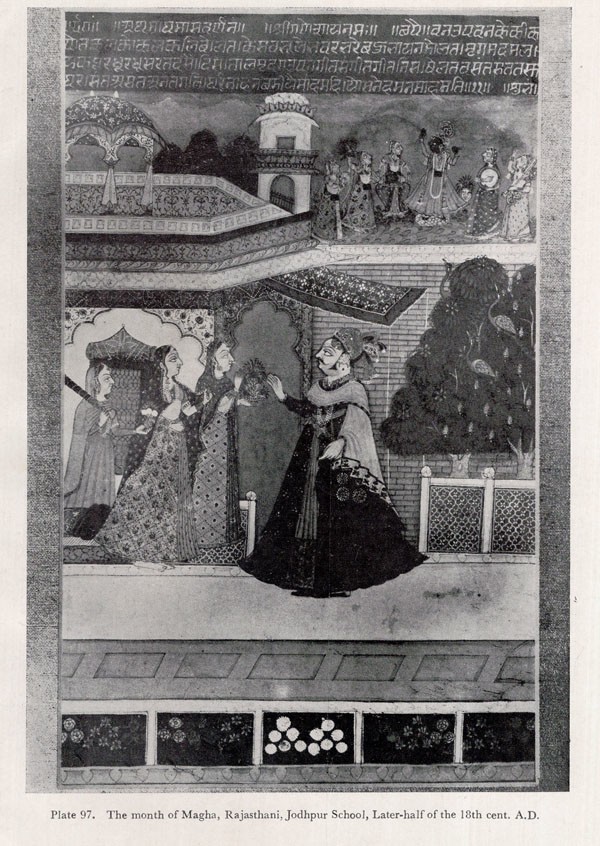
Barahmasa (The Song of Seasons in Literature & Art) (An Old and Rare Book)
Book Specification
| Item Code: | UAS474 |
| Author: | V.P Dwivedi |
| Publisher: | Agam Kala Prakashan, Delhi |
| Language: | English |
| Edition: | 1980 |
| Pages: | 271 (Throughout Color and B/w Illustrations) |
| Cover: | HARDCOVER |
| Other Details | 11.00 X 9.00 inch |
| Weight | 1.16 kg |
Book Description
India's geographical situation has provided her the unique distinction of having constantly changing circle of seasons. Unlike the Western and other hemispheres the change in the Indian seasons is continuous but subtle and has become an integral part of the Indian life, philosophy, literature, folklore and art. The present monograph is a modest attempt to corelate the literary and artistic endeavours of Indian poets and artists in depicting the seasons and months. The music, which forms an essential part of Indian way of life, is also closely related with the changing seasons and months and as such finds a place in the book. Even the iconoclastic Islam did not escape unaffected with seasonal variations and depicted seasons in its own way. Similarly the Western art depicted months in yet another style. Both these depictions also find place in the book to show how different and attractive the Indian approach has been to the seasons and months. While the Western representations of the months reflect the activities of the farmer in different months, aptly called the labours of months, those in the Indian miniatures reflect the feelings of lovers and beloveds, mostly of separation but occasionally of union as well. In this connection Rama's lamentations aptly sums up the Indian feelings in Valmiki's Ramayana when he wails for Sita: "All that was beautiful and pleasing when I was with her, the same things have, without her, become unhappy". The contribution of Hindi Sufi poets to the Barahmasa poetry is most valuable. They tried to show soul's yearnings to meet Paramatma through the Bärahmasa poetry. Even the sacred book of the Sikhs, Guru Granth Sahib, contains Barahmasa which shows the universal appeal of such poetry. Its depiction in Indian miniatures is equally graphic and heart-touching. The book was originally conceived during the course of my one year's sojourn to Cleveland, U.S.A. in the year 1966-67.
The Man and Nature relationship is fundamental to the Indian world view. It has governed artistic manifestations in the literary, the plastic and the performing arts. The Vedic seers had responded to the eternal rhythm of dawn and night, dark and light. The awareness of the daily rhythm enlarged itself to the annual cycle. Perhaps in no other civilization has the awareness of the annual cycle of the change of seasons, the play of time, taken as formalised a shape as in India. Very early in Indian thought, literature and the arts, the seasons were the subject of beautiful descriptions in poetry and drama. Gradually but surely the purely descriptive assumed metaphysical and philosophical significance; as a consequence a whole system or correspondence evolved; the seasons became symbols of psychic states and metaphysical concerns. Dr. V.P. Dwivedi takes this fascinating theme for his monograph. Although the theme's significance and its relevance to all genres of Indian art has been long recognised, there has been no overall study which presents a panoramic view of the theme. Dr. Dwivedi takes us swiftly through the treatment of the theme in the Kavyas, Natakas as also sculptures and paintings, Painstakingly he has culled evidence from inscriptions, literary references, sculptural panels and paintings. Pertinently he devotes a long chapter to miniature paintings, where the theme is easily recognised as the Barahmasa paintings. Through the examples in the coloure-plates and the monochrome-plates, it would be possible to discern the unity as also distinctiveness of treatment of the theme in diverse schools of miniature paintings. I have no doubt that this mono graph will fill a major gap in Indian art history.
**Contents and Sample Pages**
